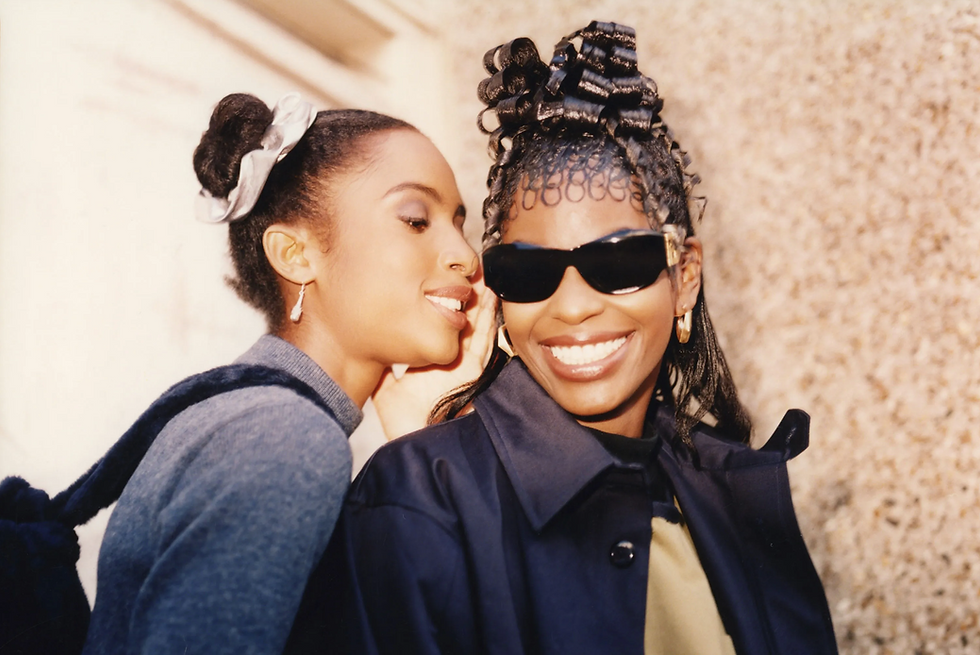“Born from the seeds of revolution and rebellion”: Armet Francis expresses art as a form of resistance in 'The Black Triangle'
- Yellowzine

- Jan 25, 2024
- 4 min read
Inside the glass shell of the Autograph gallery on a dimly lit street in Shoreditch, black and white photographs are hung on sunshine yellow walls that catch the eyes of passers by. It’s in this space that curator, Mark Sealy (OBE) and writer and journalist Gary Younge, discuss how joy, resistance, and resilience underpin the life works of photographer, Armet Francis.
Unfortunately, as is the case with many other Black creatives, you’re probably more likely to recognise his work than his name. Armet’s work spans over the course of over four decades, and has appeared in many recognisable institutions such as the Tate Modern, the V&A, and now, the Autograph gallery. He’s captured some of the Black diaspora’s most notable figures in modern history, like Bob Marley and Angela Davis.

It’s always a pleasure to hear about the cultural agency that Black creatives possess. Especially when that creativity is harnessed to represent our experiences beyond the collective pain that Black communities - in both the continent and diaspora - have often been characterised by. There have been many debates that have scrutinised whether joy is a valid form of resistance, but I’d argue that it is a tool for survival. It’s in the reflections of our pearly smiles, eyes scrunched shut, melodic belly laughs, and the staccato slap of hands against thighs, that we find the strength to keep going.
There's something timeless about Armet Francis' work. His photographs are somehow both nostalgic in a way that captures recognisable experiences of people who lived them; but also has the feeling that it could have been taken yesterday on a street in Brixton, at a stage during last year’s Carni, or at the BLM protest in 2020. It demonstrates an understanding that transcends generations. And in this way, Armet’s photographs are a conduit for our collective memory. When asked how he manages his archive, he flippantly jokes that “you have to live as long as [he has] to build it.” I’m sure this was intended to be an off the cuff comment about his age, but it’s an acute recognition of the challenging environments in which our communities exist.
Because we can’t make art if we’re dead.

“Self authorship is a radical act.” - Mark Sealy
When you’re part of a minoritised community, you become accustomed to hearing your story through the lens or narratives of other people. Our stories have typically been footnotes or anecdotes in the wider text of history. It is a radical act to tell our own stories, so that future generations don’t have to read between the lines, or search within the margins to find themselves.
It’s important that we archive and preserve our experiences, so that the next generation has a reference point that we’ve established for ourselves - in our own words, through our own lens. It is through sharing work, and organising events like this, that we avoid uncomfortable and frustrating instances of culturally significant images and artworks being attributed to an "Unknown" artist in museums.

“Art is the genesis of a population's freedom, and culture is a tool of the people’s resistance.” - Mark Sealy
Before Carnival was a celebration, it was a protest - but it has become a tradition ingrained in our collective culture. After the Notting Hill Race Riots in 1958, and the murder of Kelso Cochrane, an Antiguan carpenter in 1959, activist Claudia Jones, recognised that unity was essential at a time of racist violence. She hosted the first Caribbean Carnival at St Pancras Town Hall. Music promoter, Sonny Blacks who started the organising group for the early carnivals in Notting Hill Gate in the late 60s said Carnival itself “was born from the seeds of revolution and rebellion…” The fact that we still celebrate carnival today is a testament to the strength of Black joy, resistance and resilience.
“You need to look beyond the thing that you see, in order to see the thing that you need.”- Mark Sealy
Sometimes you need to look beyond the reality you are faced with, in order to visualise what you need.
When Armet was capturing these images, he wasn’t necessarily thinking about a specific destination or end goal. Mostly because they didn’t exist at the time. Gary Younge reminded us that in the 60’s, places like Autograph didn’t exist. There wasn’t a space for Black artists to share our art. It is a testament to Armet’s rejection of that temporal reality, that his work exists in the way it does today.
I felt incredibly privileged to be in the room with Armet. I first saw some of his work at the Life between Islands exhibit at the Tate Modern in 2021 (it’s now the cover of the book that memorialises the collection). Often, we don't give Black artists, creatives or photographers their flowers while they are around to see it. I'm so grateful that Armet Francis was able to hear from and meet some of the people that were moved by his work in his lifetime. Words by Dominique Gabrielle

'The Black Triangle' Exhibition by Armet Francis is now closed.






Comments